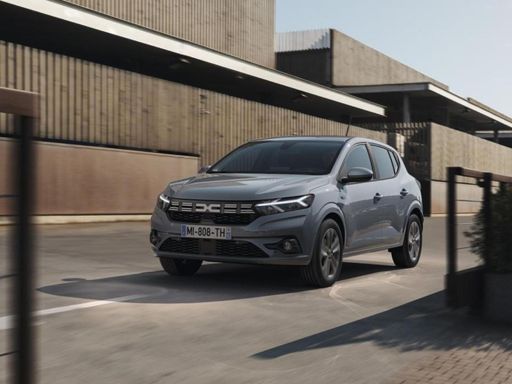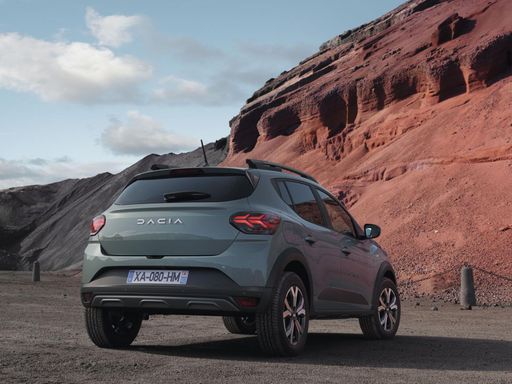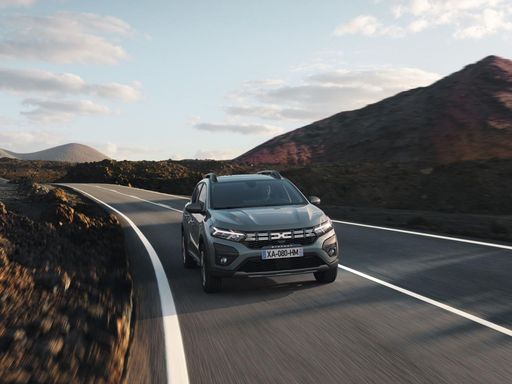Dacia Sandero vs Peugeot Partner – Which car suits you better?
Costs and Efficiency:
Price and efficiency are key factors when choosing a car – and this is often where the real differences emerge.
Dacia Sandero has a decisively advantage in terms of price – it starts at 10700 £, while the Peugeot Partner costs 22400 £. That’s a price difference of around 11684 £.
Fuel consumption also shows a difference: Peugeot Partner manages with 5.20 L and is therefore minimal more efficient than the Dacia Sandero with 5.30 L. The difference is about 0.10 L per 100 km.
Engine and Performance:
Under the bonnet, it becomes clear which model is tuned for sportiness and which one takes the lead when you hit the accelerator.
When it comes to engine power, the Peugeot Partner has a to a small extent edge – offering 136 HP compared to 110 HP. That’s roughly 26 HP more horsepower.
In acceleration from 0 to 100 km/h, the Dacia Sandero is slightly quicker – completing the sprint in 10 s, while the Peugeot Partner takes 11.20 s. That’s about 1.20 s faster.
There’s no difference in top speed – both reach 183 km/h.
There’s also a difference in torque: Peugeot Partner pulls clearly perceptible stronger with 300 Nm compared to 200 Nm. That’s about 100 Nm difference.
Space and Everyday Use:
Cabin size, boot volume and payload all play a role in everyday practicality. Here, comfort and flexibility make the difference.
Both vehicles offer seating for 5 people.
In curb weight, Dacia Sandero is clearly perceptible lighter – 1089 kg compared to 1329 kg. The difference is around 240 kg.
In terms of boot space, the Peugeot Partner offers clearly more room – 1800 L compared to 328 L. That’s a difference of about 1472 L.
In maximum load capacity, the Peugeot Partner performs convincingly better – up to 4000 L, which is about 2892 L more than the Dacia Sandero.
When it comes to payload, Peugeot Partner convincingly takes the win – 991 kg compared to 436 kg. That’s a difference of about 555 kg.
Who comes out on top?
Overall, the Peugeot Partner shows itself to be wins the duel decisively and secures the title of DriveDuel Champion.
It convinces with the more balanced overall package and proves to be the more versatile choice for everyday use.
Costs and Consumption
View detailed analysis
Engine and Performance
View detailed analysis
Dimensions and Body
View detailed analysis

Peugeot Partner
Dacia Sandero
The Dacia Sandero is the everyman's hatchback — unpretentious, practical and brilliantly affordable, with sensible space and straightforward charm where it matters most. It won't wow in the premium lane, but for buyers who want honest, dependable transport without showroom theatrics, the Sandero is a clever, no‑nonsense pick that keeps running costs low and grin levels high.
details @ Dacia / Renault Group Media
@ Dacia / Renault Group Media
 @ Dacia / Renault Group Media
@ Dacia / Renault Group Media
 @ Dacia / Renault Group Media
@ Dacia / Renault Group Media
Peugeot Partner
The Peugeot Partner is a no-nonsense workhorse that doubles as a surprisingly comfy family mover, combining clever storage solutions with an easy-to-live-in cabin. It won’t win any beauty contests, but for small businesses and active families it’s practical, economical and utterly reliable when the day gets busy.
details
 @ Dacia / Renault Group Media
@ Dacia / Renault Group Media
|
|
|
|
|
Costs and Consumption |
|
|---|---|
|
Price
10700 - 16700 £
|
Price
22400 - 33800 £
|
|
Consumption L/100km
5.3 - 7.1 L
|
Consumption L/100km
5.2 - 6.3 L
|
|
Consumption kWh/100km
-
|
Consumption kWh/100km
17.40 kWh
|
|
Electric Range
-
|
Electric Range
354 km
|
|
Battery Capacity
-
|
Battery Capacity
-
|
|
co2
105 - 140 g/km
|
co2
0 - 143 g/km
|
|
Fuel tank capacity
32 - 50 L
|
Fuel tank capacity
53 - 61 L
|
Dimensions and Body |
|
|---|---|
|
Body Type
Hatchback
|
Body Type
Cargo Van
|
|
Seats
5
|
Seats
2 - 5
|
|
Doors
5
|
Doors
4 - 5
|
|
Curb weight
1089 - 1209 kg
|
Curb weight
1329 - 1813 kg
|
|
Trunk capacity
328 L
|
Trunk capacity
1800 L
|
|
Length
4088 - 4099 mm
|
Length
4403 - 4753 mm
|
|
Width
1848 mm
|
Width
1848 mm
|
|
Height
1499 - 1535 mm
|
Height
1796 - 1812 mm
|
|
Max trunk capacity
1108 L
|
Max trunk capacity
3300 - 4000 L
|
|
Payload
404 - 436 kg
|
Payload
611 - 991 kg
|
Engine and Performance |
|
|---|---|
|
Engine Type
Petrol, LPG
|
Engine Type
Electric, Diesel, Petrol
|
|
Transmission
Manuel, Automatic
|
Transmission
Automatic, Manuel
|
|
Transmission Detail
Manual Gearbox, CVT
|
Transmission Detail
Reduction Gearbox, Manual Gearbox, Automatic Gearbox
|
|
Drive Type
Front-Wheel Drive
|
Drive Type
Front-Wheel Drive
|
|
Power HP
67 - 110 HP
|
Power HP
102 - 136 HP
|
|
Acceleration 0-100km/h
10 - 16.7 s
|
Acceleration 0-100km/h
11.20 s
|
|
Max Speed
158 - 183 km/h
|
Max Speed
135 - 183 km/h
|
|
Torque
95 - 200 Nm
|
Torque
205 - 300 Nm
|
|
Number of Cylinders
3
|
Number of Cylinders
3 - 4
|
|
Power kW
49 - 81 kW
|
Power kW
75 - 100 kW
|
|
Engine capacity
999 cm3
|
Engine capacity
1199 - 1499 cm3
|
General |
|
|---|---|
|
Model Year
2024 - 2025
|
Model Year
2024 - 2025
|
|
CO2 Efficiency Class
D, C, E
|
CO2 Efficiency Class
A, E
|
|
Brand
Dacia
|
Brand
Peugeot
|
What drive types are available for the Dacia Sandero?
The Dacia Sandero is available as Front-Wheel Drive.
The prices and data displayed are estimates based on German list prices and may vary by country. This information is not legally binding.
